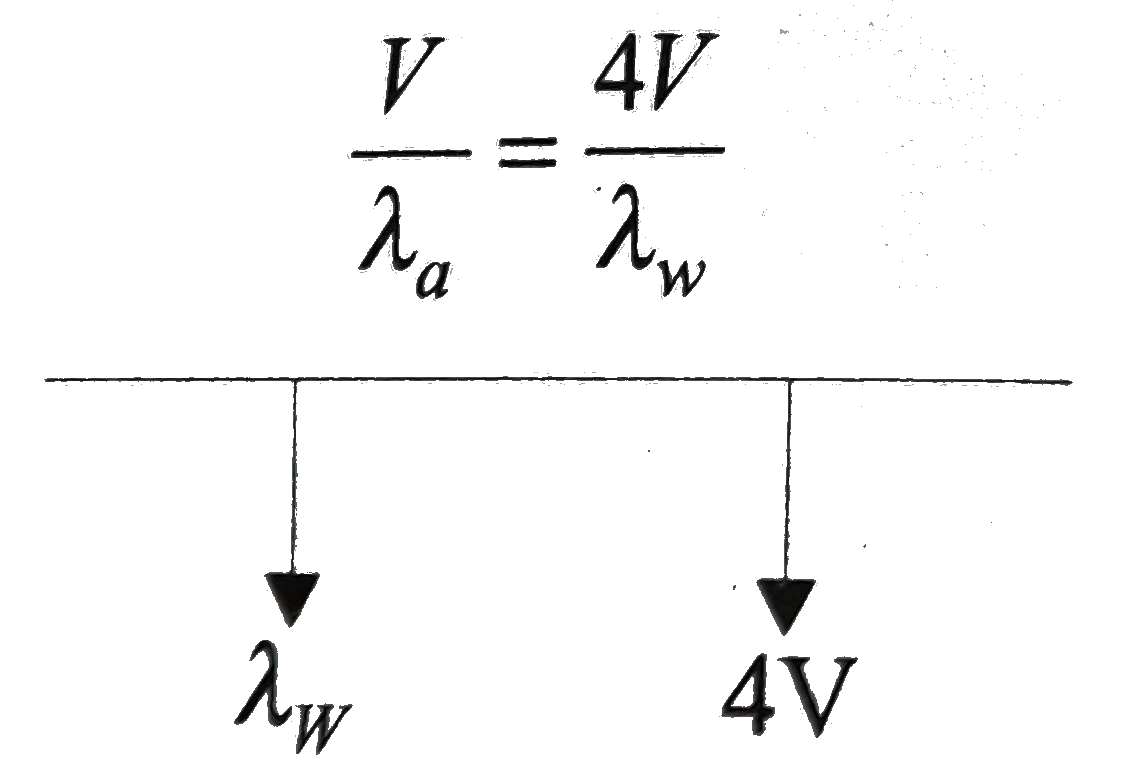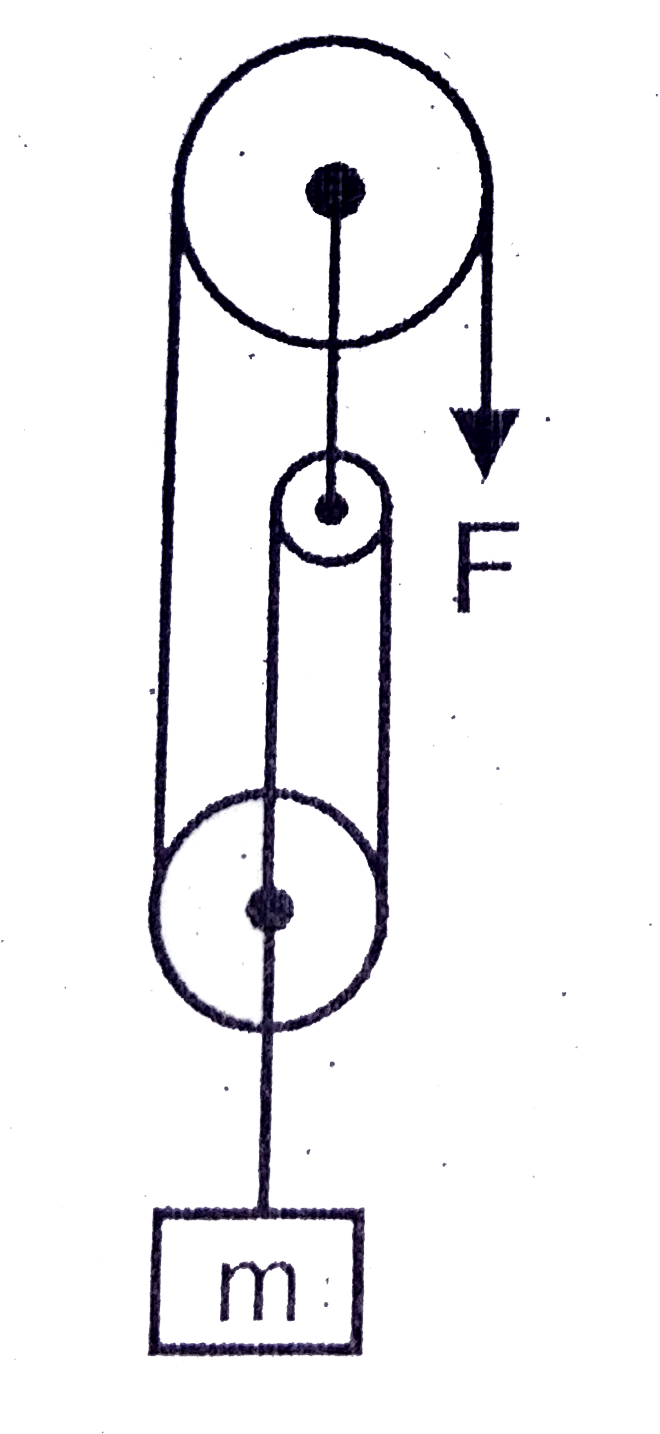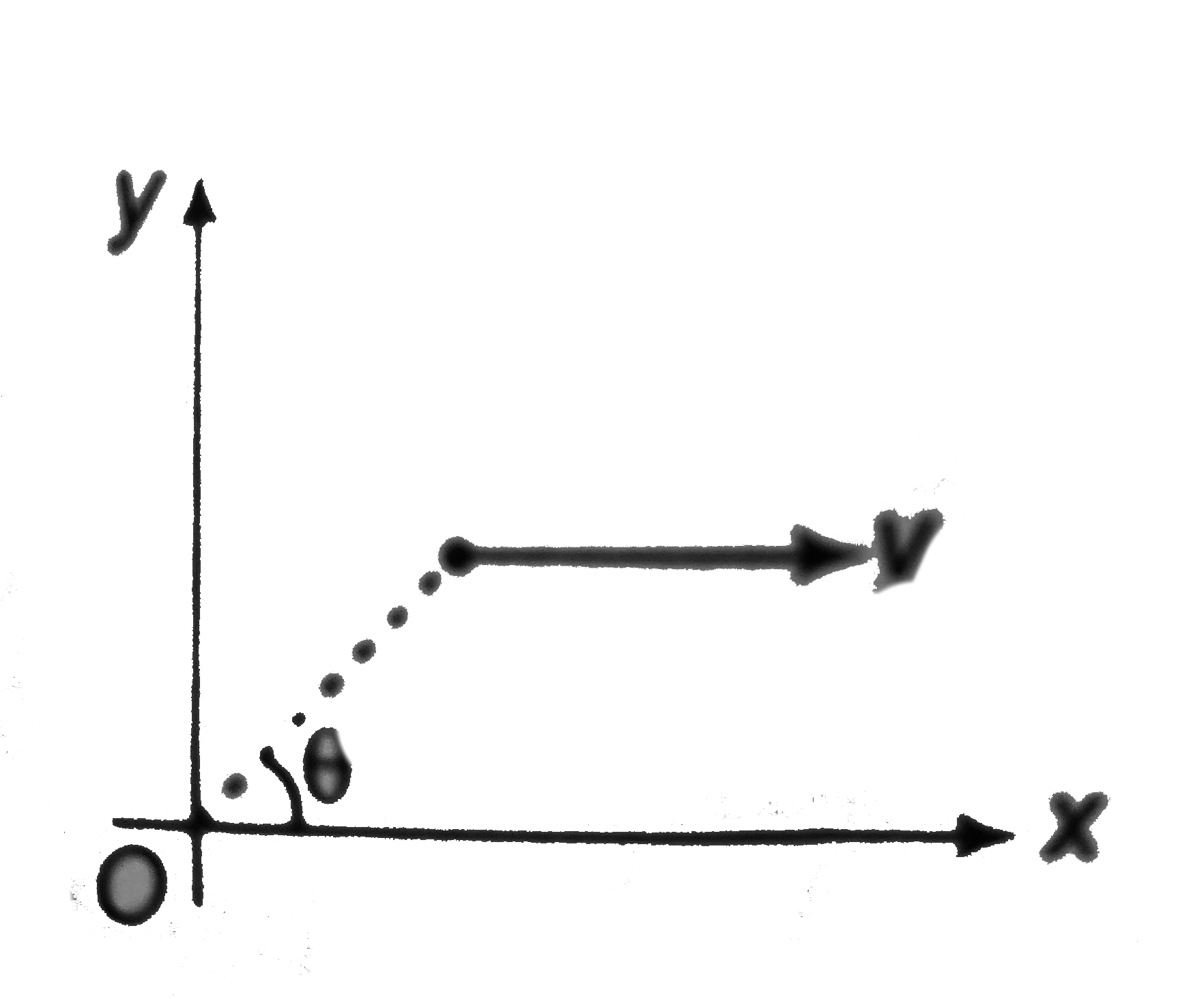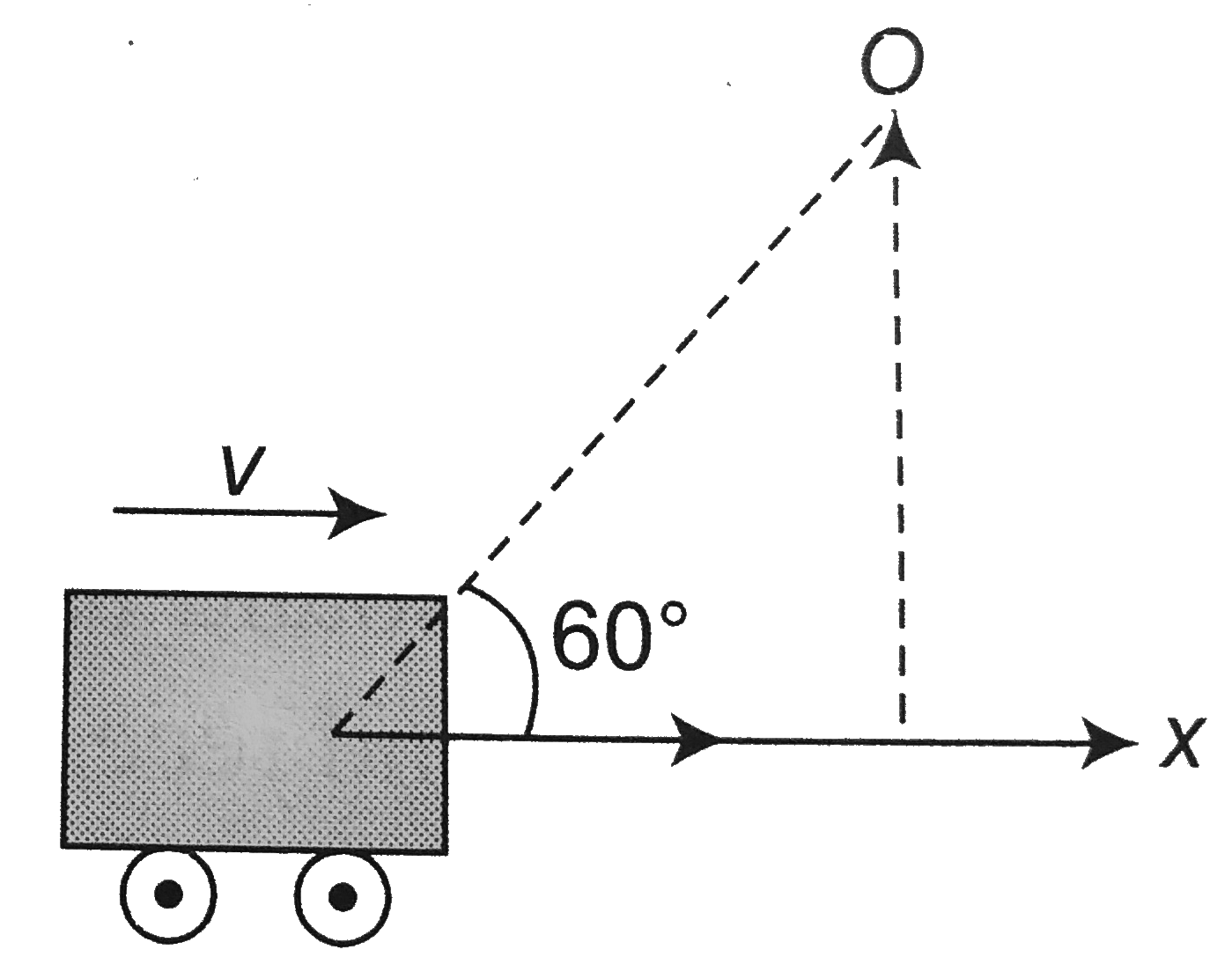
In the figure shown, an observer O1 floats (static) on water surface with ears in air while another observer O2 is moving upwards with constant velocity V1=V5 in water. The source moves down with constant velocity VS=V5 and emits sound of freqeuncy f. The velocity of sound in air is V and that in water is 4V. For the situation shown in figure.
The wavelength of the sound received by O1 is 4V5f
The wavelength of the sound received by O1 is Vf
The frequency of the sound received by O2 is 21f16
The wavelength of the sound received by O2 is 16V5f
The correct Answer is:A, C, D

For observer O1,
λ4=V−VSf=V−V5f=4V5f
For O2, there is change of medium Hence, at the surface of water, keeping frequency unchanged.
Vλa=4VλW
⇒λW=4λa=16V5f
Velocity of wave relative
f''=to observerλW=4V+V5λW
=21V55f16V=21f16
Topper's Solved these Questions
- BOOK - CENGAGE PHYSICSCHAPTER - SOUND WAVES AND DOPPLER EFFECTEXERCISE - Assertion-Reasoning24videos
SOUND WAVES AND DOPPLER EFFECT
- BOOK - CENGAGE PHYSICSCHAPTER - SOUND WAVES AND DOPPLER EFFECTEXERCISE - Comprehension144videos
SOUND WAVES AND DOPPLER EFFECT
- BOOK - CENGAGE PHYSICSCHAPTER - SOUND WAVES AND DOPPLER EFFECTEXERCISE - Single Correct252videos
SOUND WAVES AND DOPPLER EFFECT
- BOOK - CENGAGE PHYSICSCHAPTER - RIGID BODY DYNAMICS 2EXERCISE - Interger2videos
RIGID BODY DYNAMICS 2
- BOOK - CENGAGE PHYSICSCHAPTER - SUPERPOSITION AND STANDING WAVESEXERCISE - Comprehension Type5videos
SUPERPOSITION AND STANDING WAVES
Similar Questions
(i) In a car race sound signals emitted by the two cars are detected by the detector on the straight track at the end point of the race. Frequency observed is 330 Hz and 360 Hz. The original frequency of horn is 300 Hz for both cars. Race ends with the separation of 1000 m between the cars. Assume both cars move with constant velocity and velocity of sound is 330 m/s. Find the time (in seconds) taken by the winning car to finish the race.
(ii) A source of sound of frequency f is dropped from rest from a height h above the ground. An observer O1 is located on the ground and another observer O2 is inside water at a depth d from the ground. Both O1 and O2 are vertically below the source. The velocity of sound in water is 4V and that in air is V. Find
(a) The frequency of the sound detected by O1 and O2 corresponding to the sound emitted the source initially.
(b) The frequency detected by both O1 and O2 corresponding to the sound emitted by the source at height h/2 from the ground.View SolutionIf a source emitting waves of frequency f moves towards an observer with a velocity v4 and the observer moves away from the source with a velocity v6, the apparent frequency as heard by the observer will be (v=velocity of sound)
View Solution
Knowledge Check
- Question 1 - Select One

A wall is moving with constant velocity u towards a fixed source of sound of frequency f. The velocity of sound is v. The wavelength of the sound reflected by the wall isAvfBv−ufCv+ufDv−uv+u.vf - Question 2 - Select One
In the block moves up with constant velocity v m//s. Find F
 AF=mg2BF=2mg3CF=mg3DF=m3
AF=mg2BF=2mg3CF=mg3DF=m3 - Question 3 - Select One

A particle mass parallel to x-axis with constant velocity v as shown in the figure. The angular velocity of the particle about the origin OAremains constantBcontinuously increasesCcontinuously decreasesDoscillates.
A source of frequency n is moving with a uniform velocity v towards a stationary observer. If the velocity of sound is V, then the change in frequency would be -
View Solution
A car is moving along X-axis with a velocity v=20m/s. It sounds a whistle of frequency 660 Hz. If the speed of sound is 340m/s. The apparent frequency heard by the observer O (shown in figure) is:View SolutionWhen the observer moves towards the stationary source with velocity, v1, the apparent frequency of emitted note is f1. When the observer moves away from the source with velocity v1, the apparent frequency is f2. If v is the velocity of sound in air and f1f2 = 2,then vv1 = ?
View SolutionIf a source emitting waves of frequency f moves towards an observer with a velocity v/3 and the observer moves away from the source with a velocity v/4, the apparent frequency as heard by the observer will be (v= velocity of sound)
View SolutionIf an observer is moving with uniform velocity v to wards a stationary source of frequency n, and if the velocity of sound in the medium is V, then the apparent change in the frequency of the sound, heard by the observer, is -
View Solution

